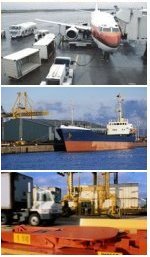

 |
 |
 |
Articles & Information<<Back to Articles/Information Index>> CUSTOMS VALUATION FIASCOThe calculation of the value of goods imported into Australia for duty purposes is governed by Division 2 of Part VIII of the Customs Act. This Division is lengthy, complex and contains a multitude of definitions, which in most cases, also contain terms which require definition. The legislation has been subject to a review and recommendations have been made for changes. However, at this time, there is no indication of when such legislative amendments might see the light of day. Despite the complexity of the legislation, it has been surprising to notice how few valuation disputes have actually ended up in the AAT or the Federal Court. Nevertheless, a recent experience of our office has confirmed the wisdom of carefully vetting the way that Customs sometimes go about valuing goods and the necessity to challenge Customs when they fail to do their job properly. Our client was importing second hand motor vehicle parts from Japan. Customs indicated that they believed that the values stated on the invoices were too low as compared to identical or similar goods. Customs pursuant to their right to do so under s.161H(4) served a Notice inviting the importer to provide information within 28 days to satisfy Customs as to the reasons for such difference. The importer responded in writing but failed to satisfy Customs. Customs accordingly then pursuant to s.161H(5) served a Notice on the importer stating that they were unable to determine the transactional value of the goods and advised that they were going to arrange for an independent assessor to value the goods. Customs engaged a valuer to proceed with their valuation. We instructed our client to videotape the goods upon their release from Customs in case there be any dispute as to the condition of the goods at the time of valuation. It was at this point that things became very interesting. Our client instructed us that on collecting the goods from the Customs valuation, they noted that over 90% of the car parts were still completely wrapped in their protective covering. We in fact verified this fact ourselves. Nevertheless, Customs still proceeded to provide us with a purported valuation for all the items listed on the invoice. Quite clearly however, their valuer had not sighted all the parts that had been valued but simply sort to extrapolate the values of all the parts from the small number of items that he actually did examine. When this was pointed out initially to Customs, they expressed great concern but shortly after closed ranks and tried to assert that their valuation had been done correctly. The importer took the matter to the AAT and arranged for its own independent valuation to be carried out. The independent valuation was then presented to Customs. It was finally at this point that Customs agreed that their methodology was inappropriate and agreed to accept the valuations as set out in the independent valuation assessment. The importer was therefore able to obtain duty refunds on the amounts that had been previously paid under protest pursuant to the Customs “valuation”. This incident highlights the close scrutiny that must be paid to all the steps and procedures adopted by Customs in the valuation process when there is any deviation from the acceptance of transactional value method. Louis Gross |
|
|
Home |
Our Services |
Our People The information you obtain at this site is not, nor is it intended to be, legal advice.
Copyright ©2007 by Gross & Becroft lawyers . All rights
reserved. |